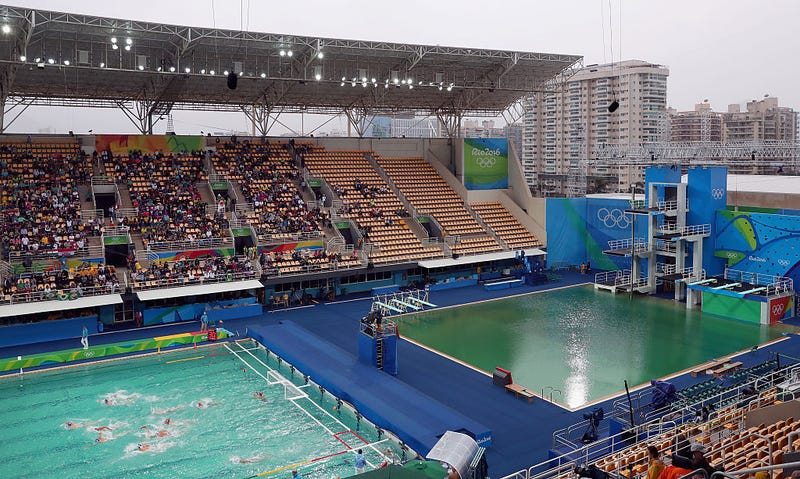
Apparently, an operator added hydrogen peroxide to the Rio Olympic Pool. The rationale behind the decision to add this chemical is not clear. It could have been intentional, as hydrogen peroxide is used in some swimming pools as an oxidiser. The problem is that the chemical is also used as a chlorine neutraliser. So when the hydrogen peroxide was added, it went to work and promptly neutralised all of the chlorine thus allowing organic plant life to thrive, since it now had water, sunlight, nutrition and the absence of a biocide (chlorine).
Could it happen in your pool?Yes, possibly, but probably not because of the addition of hydrogen peroxide. The pool water is more likely to turn green in
outdoor pools because of exposure to sunlight, which contains ultra violet light (UV light neutralises chlorine). Some outdoor pools end up looking more like ponds due to water that is green because of algal growth.
The pool plant operator needs a way of 'stabilising' the chlorine. Cyanuric acid is used for this purpose. Cyanuric acid binds with the hypochlorous acid (the disinfectant element of chlorine) and makes it more resistant to degradation by UV. The drawback is that it also makes the hypochlorous acid less effective as a disinfectant and for that reason, higher free chlorine residuals must be maintained when using cyanuric acid (2.5 - 5.0 mg/l).
Dosing the correct amount of cyanuric acid can be tricky. Too little and you won't stabilise the chlorine enough, too much and you will over-stabilise and the hypochlorous acid will not be available to act as a disinfectant. The pool plant operator must ensure that the cyanuric acid levels are kept below 200 mg/l, with the ideal range being 50 - 100mg/l. The most effective way of keeping cyanuric acid levels in check is through dilution with fresh water.
